‘Saints & Strangers’: The Real Story of That First Thanksgiving?
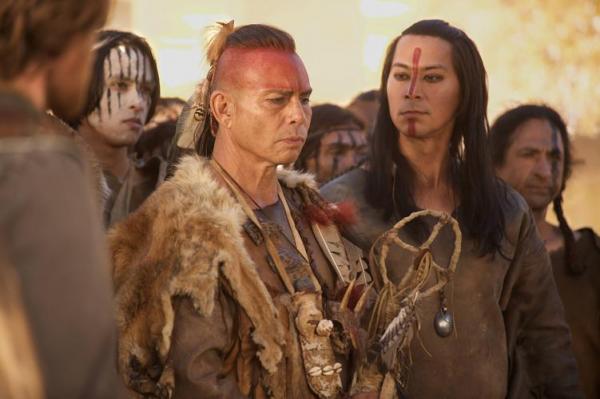
A new film airing this month on the National Geographic Channel promises to set the stage for more nuanced conversations about the fabled first Thanksgiving.
“Saints & Strangers” is a four-hour, two-night movie event billed as the “real true story of the Mayflower passengers, the founding of Plymouth and their relationship with the Native Americans.” The film, produced by Sony Pictures Television with Little Engine Productions, will air November 22 and 23.
“So many people celebrate Thanksgiving every year, but I think most people have no idea what the story is behind it,” said Kalani Queypo, a Blackfeet and Native Hawaiian actor who plays Squanto in the film. “Even people who are indigenous, we’re not taught that.”
Instead, Americans learn a dumbed-down version of the story, which often portrays Natives as one-dimensional people: savage, uncivilized and simple; or worse, a force to conquer. For example, most people recognize Squanto’s name, Queypo said, but they don’t know the details of his life.
A member of the Patuxet Tribe, Squanto was kidnapped in 1614 and sold into slavery. When he returned to New England in 1619 and found his tribe obliterated, he joined the Wampanoag and served as an interpreter and guide for the pilgrims.
“A lot of times we think of iconic people in history, and we wrap them up in a couple of sentences,” Queypo said. “People think of Squanto as the man who taught the pilgrims how to grow corn. This project was an opportunity for me to humanize him and really live with Squanto for a few months, to identify with his thought process and his limitations.”
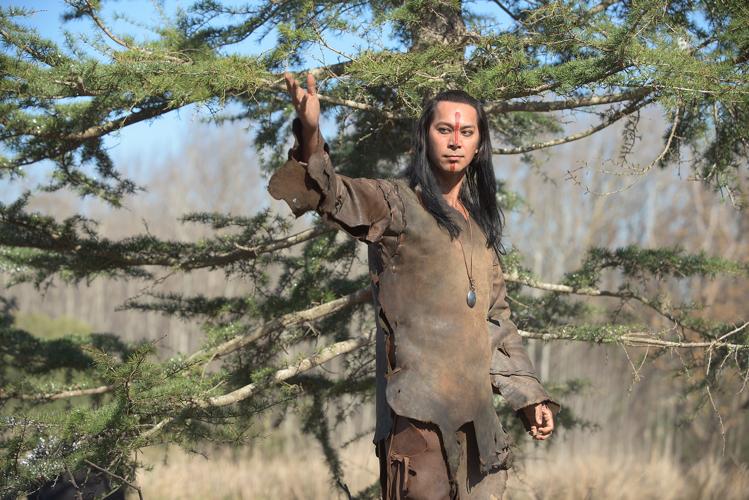
RELATED: Captured: Wampanoag History Finally Exposed in Provincetown Exhibit
The film’s Native cast also includes Raul Trujillo as Massasoit, the leader of the Pokanoket tribe; and Tatanka Means as Hobbamock, one of Massasoit’s men and an elite warrior believed to be indestructible in battle.
RELATED: Natives on the Set! Means, Trujillo, Queypo Filming Mayflower Movie in South Africa
Actors worked with Jesse Bowman Bruchac, a Western Abenaki language coach who helped them learn their lines in a dialect similar to what was spoken in New England 400 years ago. Bruchac estimated about 30 percent of the script is in Western Abenaki, with subtitles, a touch he believes adds authenticity to the film and complexity to the story.
“Every line in the movie, whether from pilgrims or Native Americans, has a real, true connection to what was happening in that period,” he said. “There is an attention to detail in this movie that has never before been brought forward.”
Bruchac also points to the film’s portrayal of Native communities prior to the Mayflower’s arrival. The ship’s 102 passengers were not the first Europeans to set foot in the New World, and Native societies already were grappling with devastating diseases and internal political turmoil.
“Each Native community had been affected in unique and definite ways,” Bruchac said. “Before the Mayflower landed, there was already slavery. Squanto had already traveled across the ocean and he was fluent in English and other dialects.”
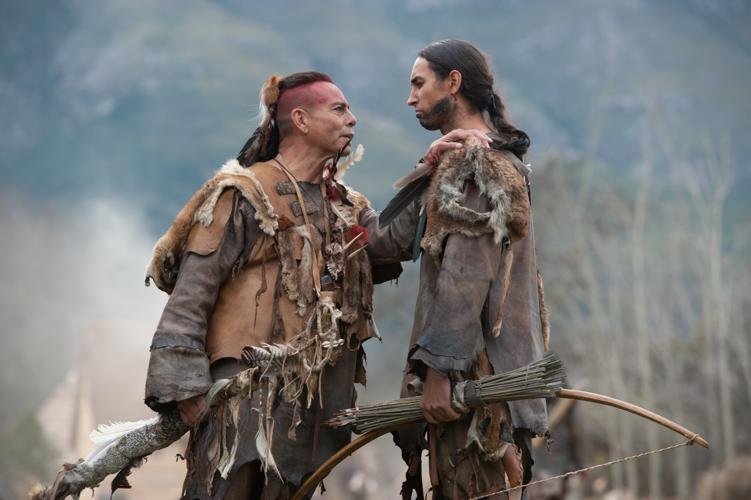
In the title of the film, Nat Geo also makes a distinction between the types of pilgrims on board the Mayflower. The saints are the religious separatists escaping persecution, while the strangers are motivated by adventure, power or fortune.
“I don’t know that either group deserves the title of saint,” said Executive Producer Grant Scharbo, who added that Nat Geo enlisted help from the Smithsonian Institution to track down historical details.
“The written history of the time was mostly written by the settlers and not the Native Americans,” he said. “Our goal was to be as objective as possible and tell the story as it happened.”
The result, Queypo said, is a complicated and heartbreaking story for both the pilgrims and the Indians.
“Life was happening on the Mayflower where there were people dying, people being born,” he said. “They were just trying to survive. Then you have the Native people who are also trying to survive. I love that in this film we explore the good and the ugly of all of it.”
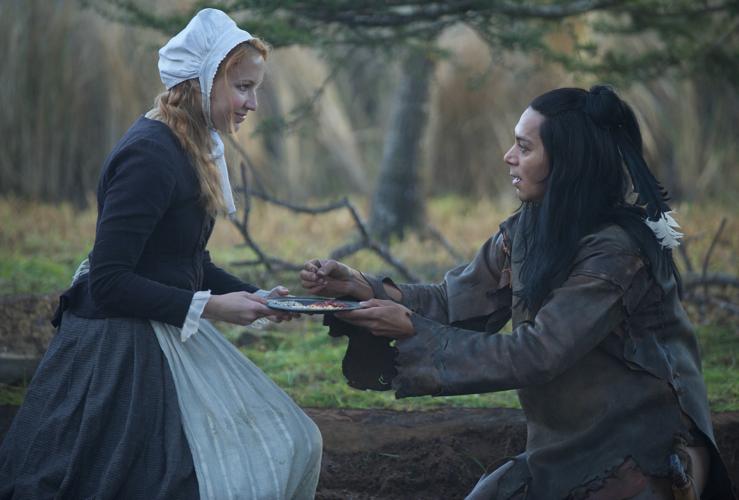
But the film comes with a warning from Sonny Skyhawk, founder of American Indians in Film and Television, an organization established in 1981 to “create a better understanding of issues pertaining to the image, portrayal and depiction of the American Indian.” Skyhawk, who is Lakota, said Nat Geo approached him for consulting services on the film, but he walked away because the project lacked integrity.
Among other things, Skyhawk takes issue with the producers’ failure to consult in depth with the Wampanoag Tribe. The Wampanoag gathered with the pilgrims at the first Thanksgiving feast and today operate Plimoth Plantation, a living history museum built near the point where the Mayflower hit land in 1620.
“The American Indian people have grown weary of being optimistic about the subject matter or story to be rehashed in ‘Saints & Strangers,’” Skyhawk said. “Unfortunately for them, 523 years of historically mitigated fabrication will not now magically produce any semblance of the truth. The opportunistic exploitation by the Nat Geo Channel, in release of their version of that history, coinciding with the again-fabricated theory of Thanksgiving Day, smells a little overdone.”
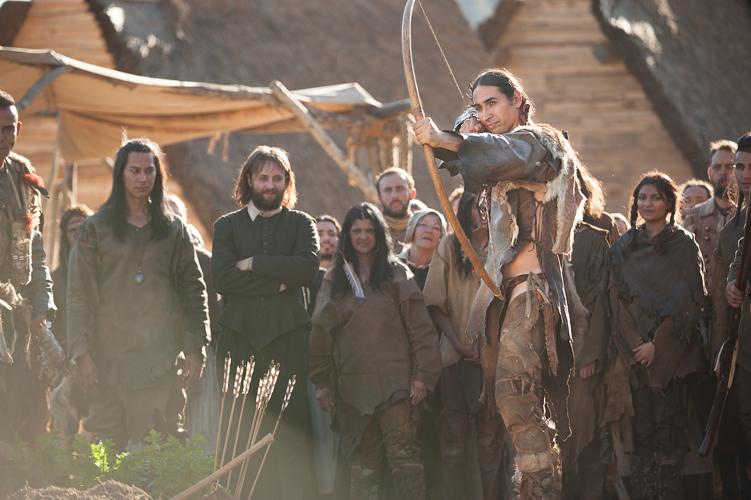
RELATED: What Really Happened at the First Thanksgiving? The Wampanoag Side of the Tale
Read more at http://indiancountrytodaymedianetwork.com/2015/11/16/saints-strangers-real-story-first-thanksgiving-162325